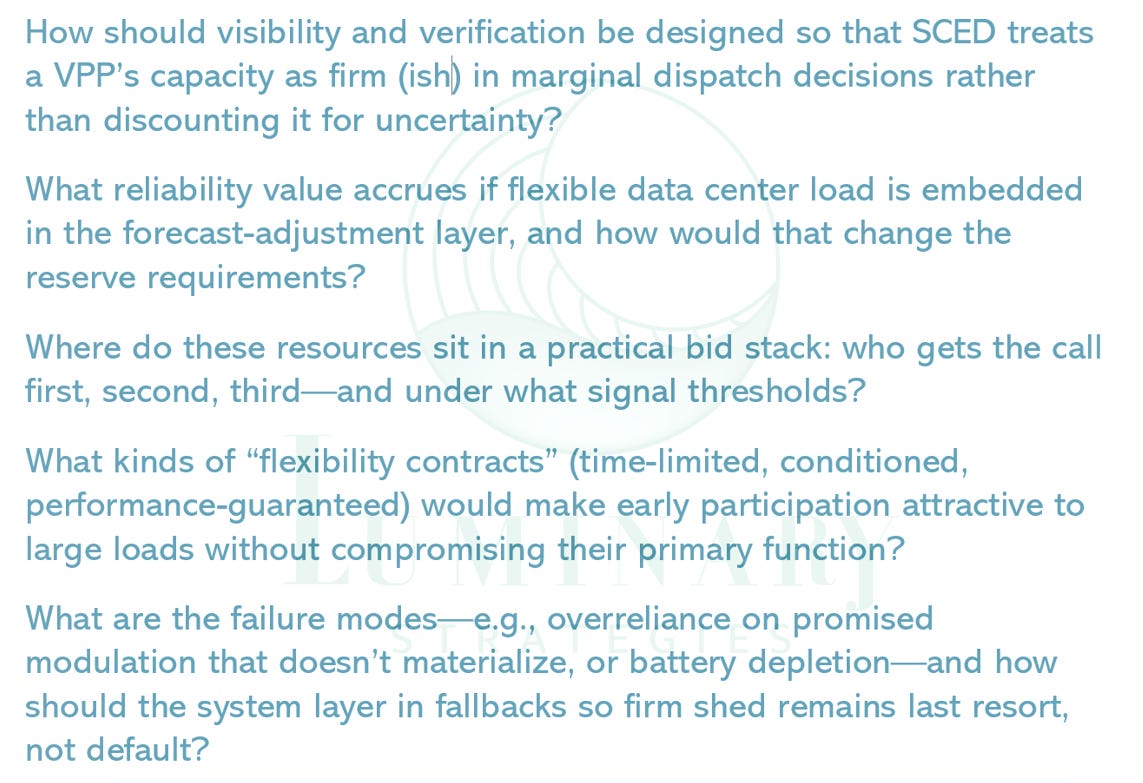Foundations of Real-Time Dispatch & Fitting VPP and Load Flex in Operations
A thinkpiece to bring together Flexibility with SCED, Control Room Operations, and Reserve Management Across U.S. Power Systems.
In this article: Foundations on grid operation layers nationwide in diverse utility areas, and explanation of the significance of the California VPP event (July 28-29 2025). The output was consistent and called explicitly as a coordinated reliability contribution, demonstrating that aggregated behind-the-meter storage can function like a dispatchable power plant when given the right signals.
Large flexible loads (data centers, industrial campuses, aggregated DERs or VPP) that can declare, measure, and deliver dispatchable adjustments are not exotic edge cases. They plug into the same decision stack operators already use. The policy and market work to do is the one that engages our reliability and systems thinking and resources at its highest capacity: making sure their capabilities are visible, valued, and integrated in grid operations frameworks before stress hits the “firm shed” threshold—so their flexibility is part of the normal dispatch continuum, not only an emergency escape valve.
Introduction
Pretty much every system operator—whether in a formal RTO/ISO or inside a vertically integrated utility—faces the same real-time balancing challenge: serve load reliably at least cost while respecting physical constraints and keeping reserves adequate. The tools, terminology, and institutional arrangements vary, but the core architecture is shared. Understanding that common foundation—and the variations in how reserves are treated—is critical if you want to fold large flexible loads (like data centers) into real-time grid reliability in a way that isn’t stove-piped around emergency “shed” events. And as virtual power plant events from dispatch success stores like Tesla in California want to scale as grid operator assets in reserve, the same methodology understanding is necessary to evolve market design to be proactive in designing incentives to call on those resources too.
This piece lays out:
SCED (Security-Constrained Economic Dispatch): what it is and why it’s everywhere;
Control room reality: the decision-support stack operators use to translate system state into dispatch;
Reserve dispatch across markets: how energy and reserves get co-managed, where approaches diverge (ERCOT’s historical proxy vs. explicit co-optimization elsewhere), and how non-RTO utilities internalize the same logic.
This piece also includes a case study commentary on how the layers explained above can evolve to a place where we teach ourselves how and where to bake into operations, the layers the flexibility solutions from large flexible loads and VPPs. Included at the end is a wealth of ISO/RTO manual information to help you amp up your real-time operations and planning knowledge.
Keep reading with a 7-day free trial
Subscribe to Luminary Strategies, LLC to keep reading this post and get 7 days of free access to the full post archives.


